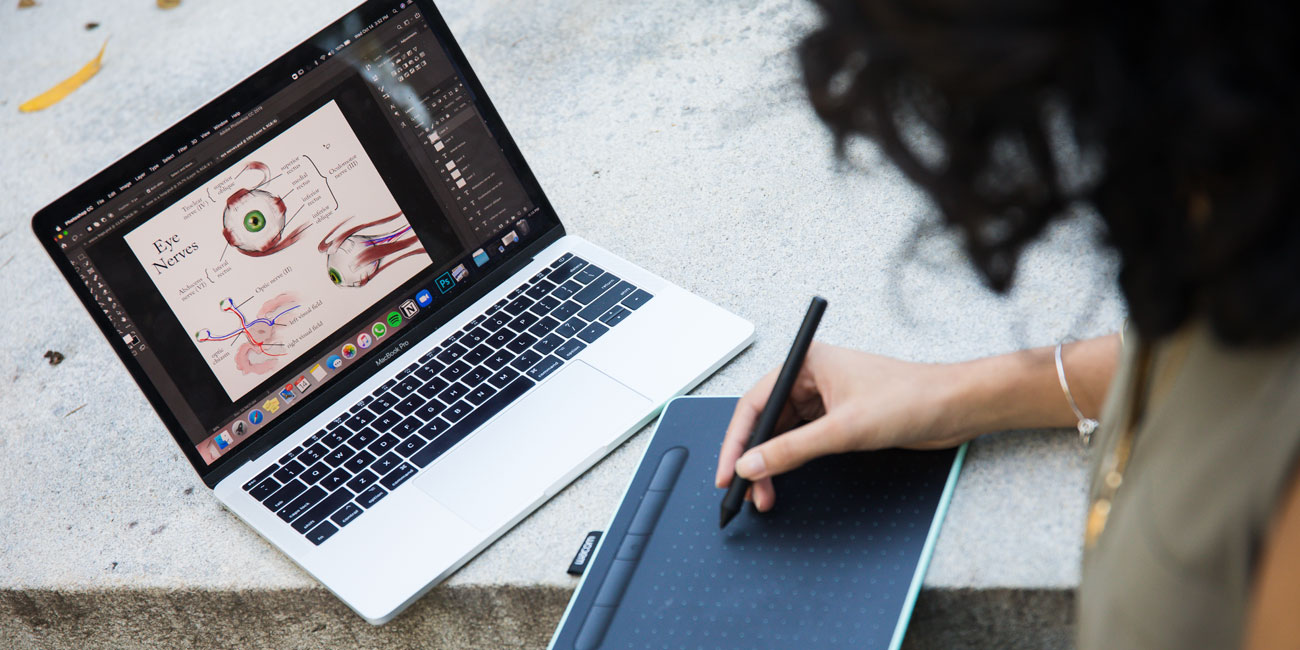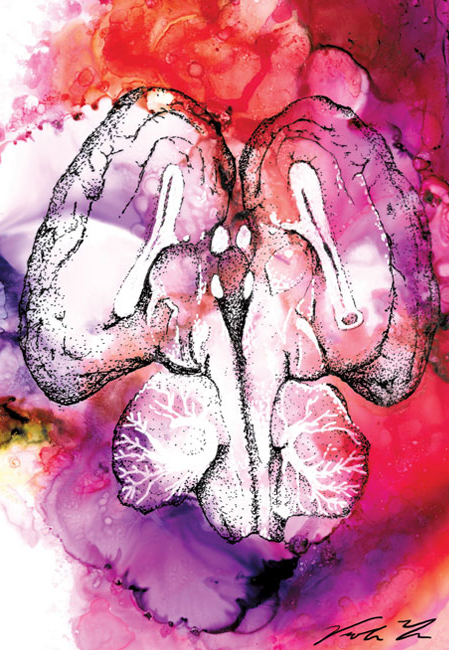“I asked them to explain to me in a nutshell: what [are you] trying to get across,” Murphy said. “I would ask them why the choice of colors, why the choice of medium that they used, whether it was a digital animation or a watercolor. And they were able to really be very articulate about their choices and were very open to constructive criticism [to] really improve those drawings for that next week. They really learned how to hone their craft very quickly.”
Murphy also led PowerPoint presentations of artists’ works and brought in visiting artists for lectures and critiques, including Philadelphia-based artists: sculptor Rebecca Kamen, who has worked with the National Institutes of Health; installation artist Caroline Lathan-Stiefel and printmaker Shelley Thortensen.
In critiquing the students’ work, Murphy expressed how she was interpreting their drawings and animations. “I would tell them, well, this is what I'm thinking about when I'm reading this line going through in this pathway. It's making me think you want me to follow the information in this kind of pattern or direction.” She also discussed the thickness of lines and how the moving of forms through a picture plane can help viewers to understand the processes being described.
“You have to be able to adapt and adjust and know that [the art] is not just something that looks good,” said Yu, “but something that's accurate, that a scientist can [use and say], ‘that is an educational tool. Not only is it beautiful but I can teach my students off this.’ … The harder part was making sure everything was really accurate.”
Yu said she was inspired by the science in “a very surprising way” to create the art. She said the team’s energy level was very high, mainly because Swann and Murphy are both so passionate about what they do—Swann in conveying information about neuroscience, and Murphy in communicating about art.
“When they come together, how could we not do great work?” said Yu. “It’s great to have both there as a resource. If we missed one, I think this project would have been a failure. We really needed both [professors].”
Hussain said she came to realize that illustrators can help scientists and artists to better understand each other’s processes and the amount of work that goes into what they each do.
“There's a science to the science, there's an art to the science,” said Hussain. “And then there's art to the art and science to the art.”
Yu said she and Hussain appreciated the remote internship, especially during the pandemic. “You had plans, it's not happening. I had a job lined up, not happening,” said Yu. “We were just so inspired and so motivated to have something that looked great [in] the outcome. So I think, weirdly enough, the one silver lining to the quarantine is that we had so much time and we could put so much effort into this.”
Swann and Murphy are hoping the project leads to future collaborations between the disciplines, including a possible new minor in medical illustration. Also Hussain’s and Yu’s drawings, paintings and animations for textbook application are on virtual exhibit in Portraits of the Brain: Visualizing Behavior, held in conjunction with Lehigh University Art Galleries’ exhibition, “Well, Well, Well: Picturing Wellness from the LUAG Collection.” In addition to Hussain’s and Yu’s work, the exhibit includes the work of Kamen, Lathan-Stiefel and Thortensen. To view the exhibition, go to wordpress.lehigh.edu/portraits-of-the-brain.














